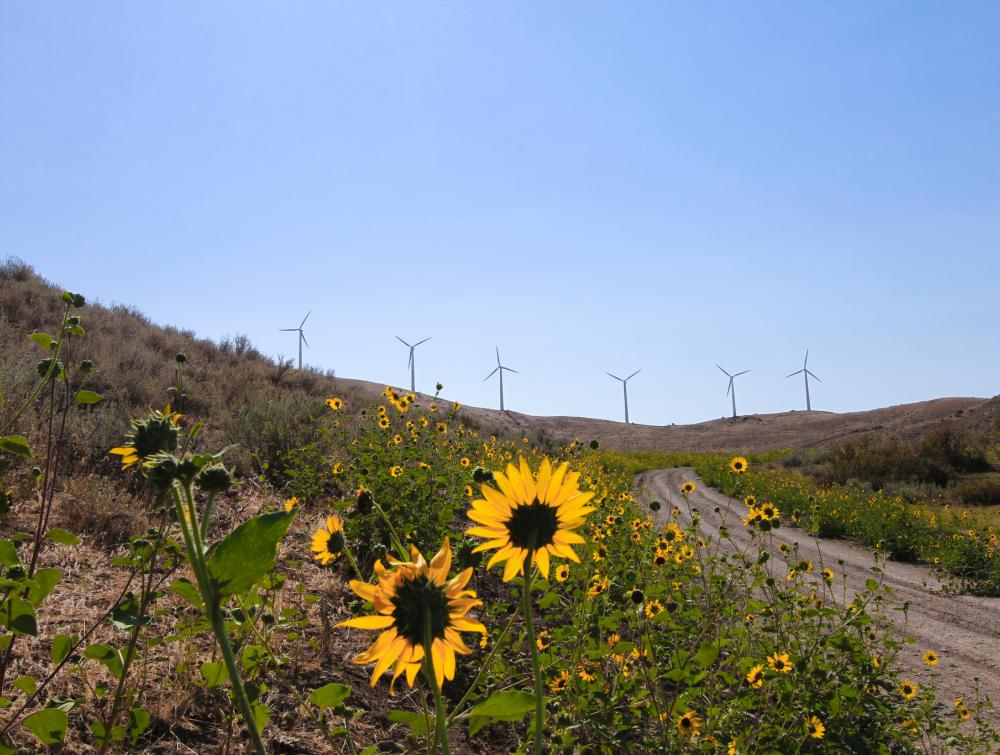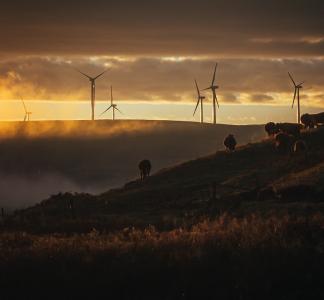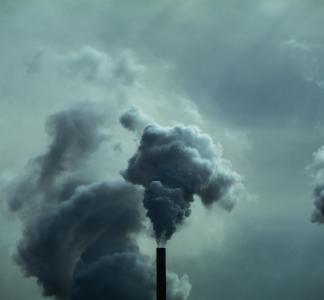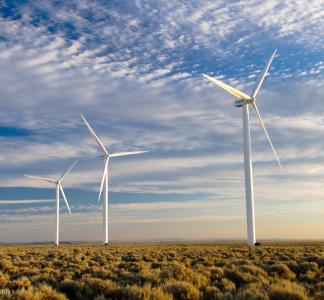FAQ: What are the environmental impacts of renewable energy?

Some of our nation’s best solar, wind and geothermal resources are found on public lands
BLM Oregon
Renewable energy must be done right to avoid negative environmental impacts
In our first blog post, “FAQ: How can we ensure renewable energy is developed fairly?” we answered questions about responsibly developing renewable energy on public lands to prevent perpetuating environmental injustices.
But what about some of the more specific environmental impacts of this development? If done poorly, development could contribute to climate change (albeit to a far, far lesser extent than fossil fuels). However, if done right, renewable energy development could benefit our species.
In this blog post we’re discussing how to avoid negative environmental impacts when ramping up renewable energy projects. Keep reading to learn more.
-
How do the environmental impacts of renewable energy compare to fossil fuels?
In the United States, the equivalent of almost one-quarter of total greenhouse gas emissions come from oil, gas and coal developed on US public lands and waters. Unlike those fossil fuels, renewable energy technologies generally do not emit harmful greenhouse gases or air pollutants during their operation. Instead, what pollution and emissions are associated with renewable energy are mostly tied to their manufacturing, construction and maintenance--but we’ll get to that in a second.
First, contrast renewables with burning coal and you’ll find that for the same amount of electricity generated, coal accounts for at least 20 times as much carbon emissions as renewable energy per kilowatt hour. For the average US household, that's the difference between your electricity generating about 50 party balloons versus 1,000 party balloons of climate pollution per day.
Emissions during manufacturing, construction, and maintenance of renewable projects depend largely on how efficiently energy is used as well as the degree of pollution control at the manufacturing site. If not done properly, renewables can also contribute to disturbing communities, wildlands and wildlife. This is why involving communities in planning these projects, and siting them in appropriate places that avoid or minimize such environmental impacts, is a key part of the equation.
-
Does renewable energy waste water?
To fully understand this answer, let's first look at the water impacts of fossil fuel activities and mining for clean energy minerals. We know that natural gas uses a lot of water (millions of gallons for a single well) during drilling and the extraction process. Fracking for natural gas can also harm the quality of water, potentially poisoning people and land near the drilling site. This is because some of the fracked water comes back up to the surface, often contaminated. Water that stays underground can also seep into and contaminate groundwater aquifers.
Coal mining is also a big threat to clean water. For a long time, selenium, a byproduct of coal mining, has been recognized as an extremely hazardous water pollutant . U.S. and tribal officials have even argued that mining-related chemical pollution of water from Canada violates the 1909 International Boundary Waters Treaty, a treaty to prevent and resolve disputes over the use of waters shared by the U.S. and Canada.
To be sure, mining for things other than coal, such as clean energy minerals, can also drain and contaminate local water sources. This means that if we’re not careful, mining for renewable energy minerals like lithium, copper, graphite, zinc, cobalt and nickel can also come at a cost to public waters. This is one reason why great care needs to be taken when not only undertaking these projects, but also determining where and if mining should even be considered. Doing so can not only protect water, but also things like sacred Indigenous sites and wildlife biodiversity. Reducing environmental and social impacts means consulting communities and Tribal nations and adopting lower-impact methods and stricter, better enforced regulations to avoid contaminants.
Now back to the question--does renewable energy waste water? Solar energy can be water-intensive. During construction, water is sometimes used to dampen the ground. This decreases harmful airborne dust from the project.
And geothermal power plants can also require a lot of water. Advanced cooling technologies such as “dry-cooling,” where turbines are cooled with air instead of water, can optimize water use and reduce water consumption significantly.
But if we're really trying to minimize water use, focusing on sources like wind is less water-intensive than traditional fossil fuel-based power generation. Doing so can further mitigate energy-related water usage.
-
How do we responsibly mine for minerals necessary for renewable energy ramp-up?
Ever heard of “green colonialism”? It’s what Indigenous leaders and environmental justice allies are calling governments’ push to skip meaningful engagement and consultation with communities on the way to a clean energy economy. The climate crisis is urgent and dangerous, but that’s no excuse for those with the most power in society – governments and private corporations – to risk communities’ health or well-being when mining for minerals like graphite, lithium and cobalt for batteries and other clean energy technologies.
Green colonialism – if left unchecked – would continue the pattern of environmental and community degradation in Tribal nations, Black, Brown, rural and frontline communities. We cannot allow this legacy to repeat itself during the renewable energy transition. Otherwise, we risk causing the same environmental and social harms as fossil fuel CEOs and corporations.
Public lands can play a role in providing the resources needed to support a green economy, but clean energy mineral development needs to be carried out in an environmentally, culturally and socially responsible manner that protects communities, wildlife, land, water and natural and cultural resources.
Where mining must occur, we can ensure it proceeds as sustainably as possible in appropriate locations with robust community involvement in potential projects from start to finish.
One important step in reducing the impact of mineral mining is updating the General Mining Act of 1872, a driving force behind centuries of legacy mining pollution that is leaking toxic heavy metals and acid mine drainage into streams and rivers all across the West. We also need to strengthen environmental safeguards and take steps to ensure companies are on the hook to clean up after themselves once a project is completed. These kinds of reforms will keep communities from being burdened with pollution for years to come.
Finally, the most sustainable way to meet the demand for clean energy minerals is to reduce the amount of mining needed altogether. That’s why supporting a “circular economy” for minerals is critical: from recycling and reusing clean energy and battery materials, to reducing demand by increasing energy efficiency of buildings and vehicles to promoting public transit to reduce carbon emissions.
-
Is there anything useful we can do with old mining and drilling sites?
To avoid renewable energy projects encroaching on relatively untouched natural areas, we can prioritize the use of lands previously disturbed or degraded by mining or landfills. According to the Environmental Protection Agency (EPA), as much as 43 million acres of land in the U.S. can viably be used for renewable energy.
Meanwhile, conservationists and communities can protect habitat that might otherwise be considered for energy development. Adopting wildlife-friendly technologies like specially designed solar and wind energy and conducting thorough environmental reviews are essential to minimizing disturbances to local ecosystems.
-
How much land do we need to support a renewable energy economy?
First and foremost, let’s get real about the impact our current energy economy has on the land. The current system is dominated by fossil fuels and biofuels (e.g., ethanol) and uses approximately 74.5 million acres of land (bigger than the state of Arizona). And that doesn’t include the impacts to land and water from pollution, soil depletion or erosion (or earthquakes!).
If we were to rely exclusively on solar energy to power the entire country, we’d need to cover approximately 13 million acres of land in solar panels – that's roughly the size of West Virginia, or 0.5 percent of the total acreage of the U.S. However, we know a renewable energy economy will not rely entirely on big solar projects, and rooftop solar installation can help reduce the amount of land needed. Plus, land used for solar can also support agriculture uses like growing crops or grazing sheep and cattle.
One good model for solar projects is the Dry Lake Solar Energy Zone, which has made Nevada a leader on smart renewable energy development. The solar farm powers 46,000 homes with a relatively low environmental impact. This is because it was built using existing infrastructure from old mining sites, industrial facilities and transmission lines.
Of course, our energy mix won’t only rely on solar—it will include onshore and offshore wind as well as geothermal.
-
*BONUS!* Is wind energy safe for birds?
Last, but certainly not least, what about the birds?! Picturing a bird colliding with wind turbines isn't pretty and, understandably, concerns have been raised about the potential impact of wind energy on bird populations. Yet studies have shown that these occurrences are relatively low compared to birds colliding with things like buildings and communication towers.
Strategic placement of wind turbines, avoiding migration routes and sensitive bird habitat, can help minimize these risks and address the much deeper threat posed to birds and other wildlife by fossil fuel-driven climate change and pollution.
Responsibly ramping up renewable energy can happen now
If done right, ramping up renewable energy production offers an indispensable opportunity to combat climate change and reduce environmental injustices. Thoughtful planning and input from the most impacted communities must be top-of-mind. We can create a sustainable future, let’s get it right.



